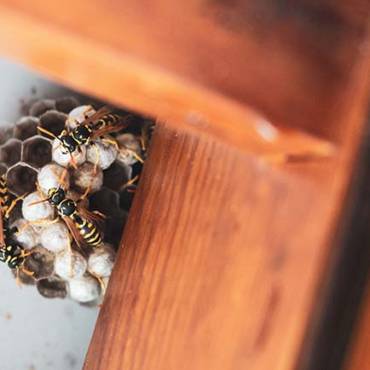Effective Spider Control Strategies: Protect Your Home from Unwanted Eight-Legged Guests
Spiders are a common sight in homes across the country, and while these eight-legged creatures can help control other pest populations, their presence can evoke fear and anxiety for many homeowners. Bee Smart Pest Control understands the importance of maintaining a healthy living environment, and through this article, we aim to provide valuable, educational, and informative content about effective spider control strategies to keep your home spider-free.
Our comprehensive guide will dive into the world of spiders and their habits, what attracts spiders to your home, effective preventive measures, and best practices for managing spider infestations. We’re here to equip you with the knowledge and tools needed to maintain a spider-free living environment and address any emerging issues effectively.
1. Understanding Spider Habits and Common Species
Spiders are primarily ambush or web-building predators that feed on insects and other arthropods. While many spiders are harmless to humans, a few species can deliver venomous bites that may cause discomfort or severe reactions. Familiarizing yourself with the habits and appearances of common household spiders can help you identify and manage their presence.
Two frequently encountered house spiders are the American house spider (Parasteatoda tepidariorum) and the wolf spider (Lycosidae spp.). The American house spider is a harmless cobweb weaver with a brown or gray rounded body, while wolf spiders are larger, ground-dwelling spiders with a hairy appearance and robust legs.
The venomous spiders of greater concern include the black widow (Latrodectus spp.) and the brown recluse (Loxosceles reclusa). Black widows can be identified by their shiny black bodies and distinctive red hourglass marking on the abdomen, whereas brown recluses are light brown with a violin-shaped mark on their cephalothorax.
2. What Attracts Spiders to Your Home
Several factors can attract spiders to your living space, as they thrive in environments where their basic survival needs for food, shelter, and moisture are met.
– Access to prey: Spiders are attracted to locations with abundant insect populations, so minimizing indoor insect activity will decrease the appeal of your home to these predators.
– Clutter and hiding spots: Spiders often seek shelter in undisturbed areas such as cluttered storage spaces, stacks of firewood, or piles of debris. Removing potential hiding spots will reduce their likelihood of settling indoors.
– Moisture: Some spider species are attracted to damp environments, so repairing leaks, ensuring adequate ventilation, and maintaining proper home humidity can help deter their presence.
3. Preventive Measures for Spider Control
Implementing preventive measures is key to maintaining an effective spider control strategy. Here are some practical tips to help minimize the chances of encountering spiders in your living space:
– Regular cleaning: Vacuum and dust frequently to remove spiders, their webs, and other insects that may serve as a food source. Pay special attention to corners, window sills, and wall and ceiling junctions.
– Close entry points: Seal cracks, gaps, and holes in your home’s exterior, and ensure screens are intact to prevent spiders from gaining entry.
– Outdoor maintenance: Remove debris and keep vegetation well-trimmed around your home’s perimeter. Avoid stacking firewood directly against your house, as this can create ideal hiding spots for spiders.
– Install door sweeps and weatherstripping: Secure door gaps and window seals with door sweeps and weatherstripping materials to further prevent spider entry.
4. Managing Spider Infestations
If spiders have already invaded your home, there are several safe and effective methods for managing the infestation:
– Manual removal: If a spider is spotted, you can carefully capture it using a jar or a similar container and release it safely outdoors. Alternatively, use a vacuum to capture and remove the spider, their webs, and any egg sacs.
– Sticky traps: Place sticky traps in strategic locations around your home, such as in corners and near baseboards. These traps will not only capture spiders but also help control other insects that may attract spiders.
– Seek professional help: If you suspect a venomous spider infestation or the presence of a large number of spiders, it’s wise to consult a professional pest control service like Bee Smart Pest Control for assistance.
Conclusion
Empowering yourself with knowledge about spiders and implementing proven spider control strategies can help you protect your home and family from unwanted eight-legged guests. By understanding common spiders, identifying factors that attract them, and implementing preventive measures, you can create a comfortable, safe living space free from spider intrusions. Trust Bee Smart Pest Control’s expertise in maintaining a spider-free environment to enjoy a healthy, comfortable home for you and your loved ones. Contact us today for spider extermination services.




